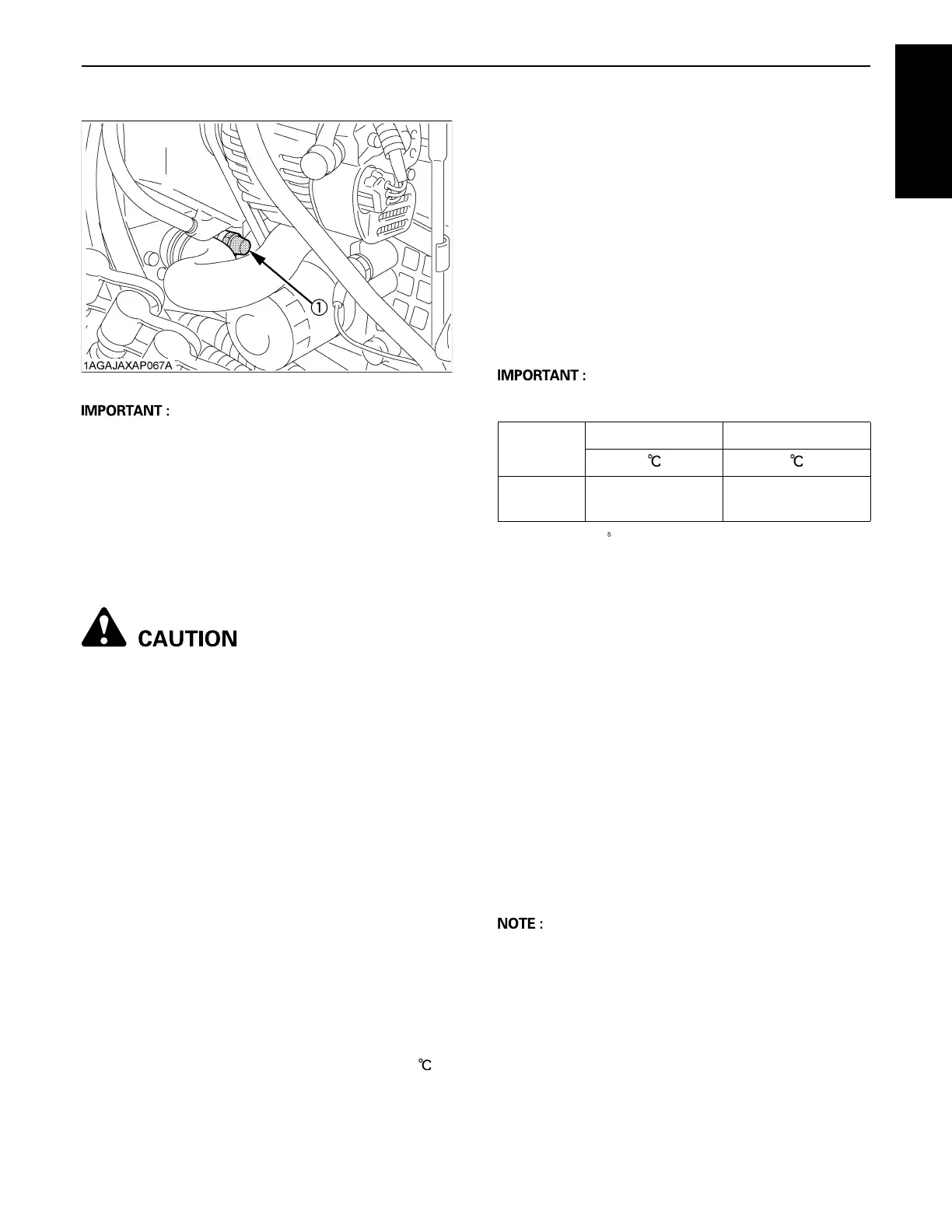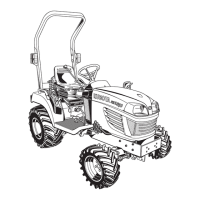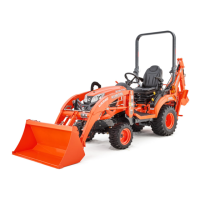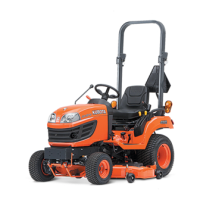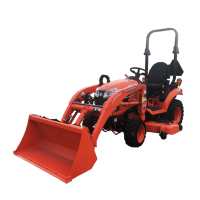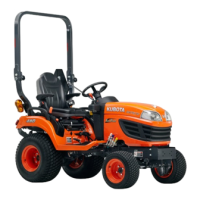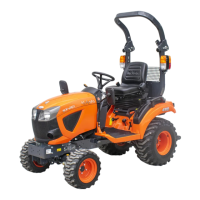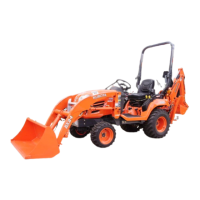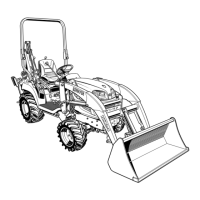71PERIODIC SERVICE
ENGLISH
A Do not start engine without coolant.
A Use clean, fresh soft water and anti-freeze to fill the
radiator.
A When mixing the anti-freeze with water, the anti-freeze
mixing ratio is 50%.
A Securely tighten radiator cap. If the cap is loose or
improperly fitted, water may leak out and the engine
could overheat.
BAnti-Freeze
To avoid personal injury:
A When using antifreeze, put on some protection
such as rubber gloves (Antifreeze contains
poison.).
A If should drink antifreeze, throw up at once and
take medical attention.
A When antifreeze comes in contact with the skin
or clothing, wash it off immediately.
A Do not mix different types of Antifreeze.
The mixture can produce chemical reaction
causing harmful substances.
A Antifreeze is extremely flammable and
explosive under certain conditions. Keep fire
and children away from antifreeze.
A When draining fluids from the engine, place
some container underneath the engine body.
A Do not pour waste onto the grounds, down a
drain, or into any water source.
A Also, observe the relevant environmental
protection regulations when disposing of
antifreeze.
If it freezes, coolant can damage the cylinders and
radiator. If the ambient temperature falls below 0 or
before a long-term storage, let out cooling water
completely, or mix fresh water with long-life coolant and fill
the radiator and recovery tank with the mixture.
1. Long-life coolant (hereafter LLC) comes in several
types. Use ethylene glycol (EG) type for this engine.
2. Before employing LLC-mixed cooling water, fill the
radiator with fresh water and empty it again.
Repeat this procedure 2 or 3 times to clean up the
inside.
3. Mixing the LLC
Put the LLC in cooling water in the percentage (%) for
a target temperature. When mixing, stir it up well, and
then fill into the radiator.
4. The procedure for the mixing of water and antifreeze
differs according to the make of the antifreeze and the
ambient temperature. Refer to SAE J1034 standard,
more specifically also to SAE J814c.
A When the antifreeze is mixed with water, the
antifreeze mixing ratio must be less than 50%.
D At 1.013 x 10 Pa (760mmHg) pressure (atmospheric).
A higher boiling point is obtained by using a radiator
pressure cap which permits the development of
pressure within the cooling system.
5. Adding the LLC
(1) Add only water if the mixture reduces in amount
by evaporation.
(2) If there is a mixture leak, add the LLC of the same
manufacturer and type in the same mixture
percentage.
D Never add any long-life coolant of different
manufacturer. (Different brands may have
different additive components, and the engine
may fail to perform as specified.)
6. When the LLC is mixed, do not employ any radiator
cleaning agent. The LLC contains anticorrosive agent.
If mixed with the cleaning agent, sludge may build up,
adversely affecting the engine parts.
7. Kubota's genuine long-life coolant has a service life of
2 years. Be sure to change the coolant every 2 years.
A The above data represent industry standards that
necessitate a minimum glycol content in the
concentrated antifreeze.
A When the coolant level drops due to evaporation, add
water only to keep the antifreeze mixing ratio less than
50%. In case of leakage, add antifreeze and water in
the specified mixing ratio before filling in to the
radiator.
(1) Drain plug
Vol %
Anti-freeze
Freezing Point Boiling Point*
40
50
-24
-37
106
108

